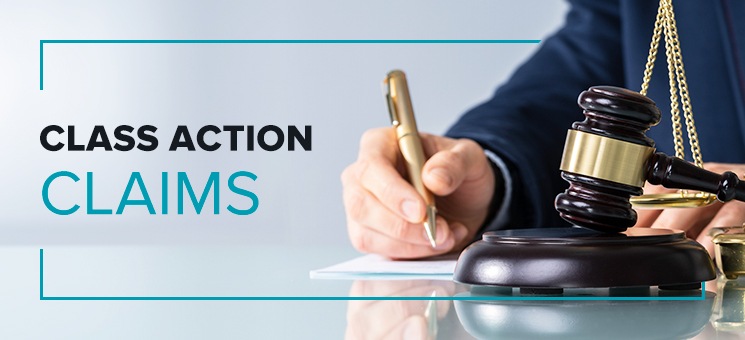Legal Understanding: Browsing the Landscape of Class Action Lawsuit Instances
Wiki Article
Understanding Course Activity Legal Action: An Overview for Lawyers
Course activity claims have actually come to be an indispensable component of the lawful landscape, enabling the loan consolidation of numerous cases right into a single action. For lawyers, understanding the complexities of class activity lawsuits is vital in successfully representing their clients. This comprehensive guide discovers the principles of class action legal actions, from determining prospective course participants to browsing the qualification procedure. Furthermore, it looks into vital methods for handling class activity litigation and provides understandings into negotiating and getting authorization for settlements. By delving into the details of course action legal actions, this guide equips legal representatives with the understanding and devices needed to successfully browse this complex location of law.The Fundamentals of Course Action Claims
Course action claims are a lawful mechanism utilized to settle similar cases from a group of people into a single legal action, offering a cost-efficient and efficient approach to looking for justice and resolution. This kind of suit permits a depictive complainant, acting on behalf of the entire class, to bring a case against a defendant that has actually presumably triggered injury or went against the rights of several individuals.The fundamental needs for bringing a course activity legal action include numerosity, commonality, typicality, and adequacy of representation. Numerosity refers to the truth that the course need to be so huge that joinder of all participants would certainly be not practical. Commonality means that there should be typical inquiries of regulation or reality that are shared by all members of the class. Typicality requires that the claims of the depictive complainant are regular of the cases of the whole course. Adequacy of representation ensures that the representative plaintiff will adequately represent the passions of the whole class.
Course action legal actions can be beneficial for both plaintiffs and defendants. For plaintiffs, it permits them to merge their sources and share the expenses and risks connected with lawsuits. It also gives a level playing area when they are up against huge corporations or entities. For accuseds, it supplies the chance to effectively solve several claims in a solitary legal action, staying clear of the need to protect against countless individual suits.
Identifying and Assessing Potential Class Participants
After developing the basic demands for a class action claim, the following step is to determine and examine potential course participants. If they meet the needed standards., this process includes establishing that may be component of the class and reviewing their insurance claims to determine.To recognize potential course participants, lawyers usually perform extensive research study and gather pertinent information. This may entail examining records, performing meetings, and checking out documents to determine individuals or entities that may have been affected by the alleged wrongdoing. It is essential to establish a comprehensive and clear checklist of possible course members to guarantee that all affected events are consisted of in the claim.
As soon as prospective class participants have been identified, the following step is to analyze their insurance claims. This entails examining the qualities of each private case to figure out if they meet the lawful demands for class qualification. Legal representatives should carefully examine the facts, evidence, and lawful theories of each prospective course member's insurance claim to ensure that they have a feasible situation.
Evaluating possible course members likewise entails identifying whether they fulfill the class meaning and have actually suffered similar damage as an outcome of the defendant's actions. This calls for comparing the truths and conditions of each potential class participant's scenario to the allegations and legal concepts presented in the lawsuit.
Navigating the Course Qualification Refine
To successfully navigate the class accreditation procedure, legal representatives should carefully abide by the step-by-step needs set forth by the court. Class certification is an important action in a course activity suit, as it figures out whether an instance can continue as a course activity, representing a team of individuals that have comparable insurance claims against an accused. The procedure includes satisfying details standards, such as numerosity, commonality, typicality, and adequacy of representation.First of all, attorneys must develop numerosity by demonstrating that the class is so huge that private joinder is impractical. This calls for a detailed analysis of the defenses and insurance claims involved.
Following, lawyers have to show typicality, which means that the depictive plaintiff's cases are normal of the claims of the course members. This makes certain that the rate of interests of the representative complainant align with the rate of interests of the class. Finally, lawyers need to demonstrate competence of representation, indicating that the representative plaintiff and their advise will relatively and adequately stand for the interests of the course.
To browse this procedure successfully, attorneys must completely prepare by performing comprehensive research study, collecting evidence, and developing a compelling debate that pleases each of these requirements. They must also be prepared to reply to any kind of challenges or objections elevated by the offender. By diligently adhering to the step-by-step needs stated by the court, lawyers can enhance their possibilities of acquiring course certification and advancing the interests of the class members.

Key Strategies for Taking Care Of Class Action Lawsuits
Upon successfully browsing the class accreditation procedure, lawyers need to after that execute crucial strategies for efficiently taking care of course action litigation. These methods are crucial to guarantee that the instance continues smoothly and efficiently, eventually making best use of the chances of a positive end result for the course participants.
One key technique is to establish a cohesive and solid legal group (Class action lawsuit). This involves constructing a group of lawyers with expertise in class action litigation, in addition to other appropriate website link locations such as the certain sector or subject issue associated with the instance. A versatile group can bring various viewpoints and abilities to the table, boosting the total efficiency of the lawsuits
One more essential approach is to develop a comprehensive and well-thought-out lawsuits strategy. This strategy ought to describe the general objectives of the case, as well as the details lawful concepts and disagreements that will be pursued. It needs to additionally consist of a timeline and budget plan to guarantee that the case remains on track and within the go to my blog allocated resources.
Furthermore, lawyers need to proactively engage with the course participants throughout the litigation procedure (Class action lawsuit). This consists of offering regular updates on the progression of the situation, looking for input and responses from the class participants, and resolving any type of issues or inquiries they might have. By cultivating open communication and cooperation, attorneys can build trust fund and support amongst the class participants, which can be critical in achieving an effective resolution
Working Out Course Action Legal Actions: Arrangement and Authorization
When it involves resolving course activity claims, reliable arrangement and obtaining authorization are crucial steps in attaining a resolution. Course action claims are complex and entail a a great deal of complainants, making it critical to reach a settlement that is satisfactory and fair to all events involved.
As soon as a negotiation agreement is reached, it needs to be approved by the court. The court's role in this process is to ensure that the negotiation is fair, reasonable, and sufficiently protects the interests of the class members. The court will certainly think about aspects such as the nature of the insurance claims, the toughness of the proof, the possible healing for the course participants, and any kind of arguments elevated by course members.
Acquiring court authorization is critical as it gives finality to the negotiation and secures the passions of the course members. It guarantees that the settlement is binding and enforceable, and class participants can obtain their rightful payment.
Final Thought

Course action claims have become an important part of the legal landscape, permitting for the combination of several insurance claims into a solitary action. Class accreditation is an important step in a class action suit, as it figures out whether an instance can proceed as a course activity, representing a team of individuals that have comparable cases versus an offender. By carefully sticking to the procedural demands established forth by the court, attorneys can increase their possibilities of acquiring class accreditation and progressing the passions of the class members.
The court will certainly think about variables such as the nature of the cases, the stamina of the proof, the prospective recuperation for the course members, and any kind of objections elevated by course members.
By recognizing and analyzing potential class participants, legal representatives can identify the practicality of a class activity lawsuit.
Report this wiki page